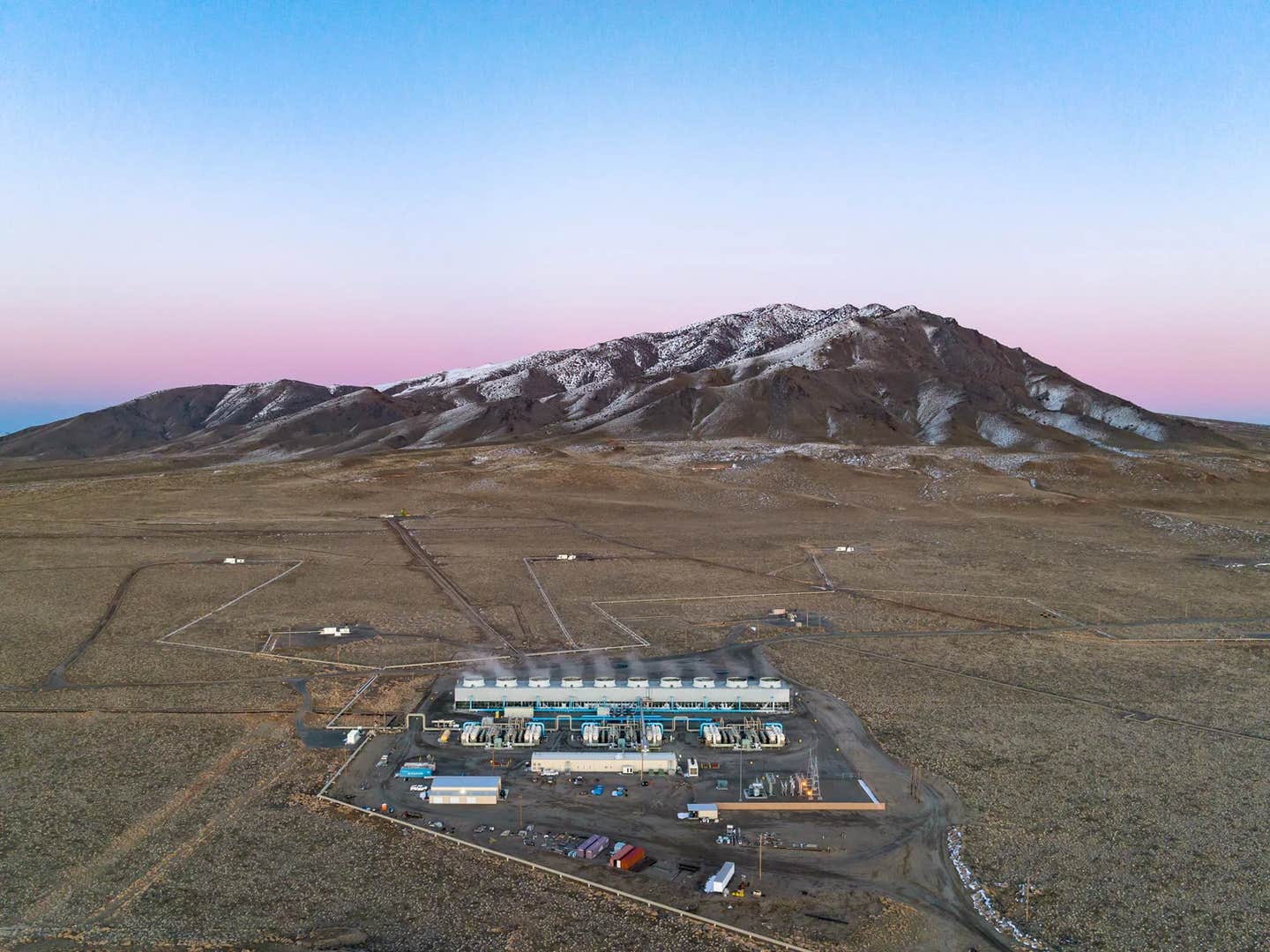Google’s Innovative Geothermal Project in Nevada Powers Data Centers with Clean Energy
Its a significant step toward Google’s goal of sourcing carbon pollution-free electricity to power its data centers around the clock by 2030

[Nov. 30, 2023: JD Shavit, The Brighter Side of News]
Unlike traditional geothermal power, Fervo uses drilling techniques pioneered by the oil and gas industry to harness heat that would have previously been difficult to access. (CREDIT: Google)
In a groundbreaking endeavor to reduce its carbon footprint, Google has teamed up with startup Fervo to launch a pioneering geothermal project in Nevada. This venture represents a significant step toward Google's ambitious goal of sourcing carbon pollution-free electricity to power its data centers around the clock by 2030. The project employs novel geothermal technology and, despite its relatively modest 3.5 MW capacity, promises to contribute to a more sustainable energy mix for the tech giant.
Google's partnership with Fervo marks a paradigm shift in the realm of geothermal energy production, utilizing innovative techniques that differentiate it from traditional geothermal power plants. To put the project's capacity in perspective, 3.5 MW can supply the energy needs of approximately 2,625 homes. The electricity generated by this project will feed into the local grid, serving two of Google's data centers located outside Las Vegas and Reno.
Pioneering Geothermal Technology
The project's inception dates back to 2021 when Google unveiled its "world's first corporate agreement to develop a next-generation geothermal power project." Geothermal energy capitalizes on the Earth's internal heat reservoirs, but this endeavor departs from conventional geothermal plants that typically extract hot fluids from natural reservoirs to produce steam, which, in turn, drives turbines.
One of the most promising opportunities is enhanced geothermal energy, which uses new techniques to harness the consistent heat from within the Earth’s crust and generate electricity without burning fossil fuels or releasing carbon into the atmosphere. (CREDIT: Google)
In this innovative approach, the project is situated on the fringes of an existing geothermal field, described by Michael Terrell, Senior Director of Energy and Climate at Google, as having "hot rock, but no fluid." Fervo's ingenious solution involves drilling two horizontal wells to pump water into the rock. This cold water traverses fractures within the rock, absorbing its heat and returning to the surface as steam. The system operates in a closed-loop manner, enabling water to be reused efficiently—an essential feature, particularly in the water-scarce region of Nevada.
Smart Infrastructure Integration
Fervo has further enhanced the efficiency of its geothermal system by incorporating fiber optic cables within the two wells. These cables enable the collection of real-time data on flow, temperature, and system performance. This innovative approach, inspired by practices in the oil and gas industry, allows for the extraction of energy resources that were previously inaccessible.
According to Terrell, the utilization of existing technologies from the oil and gas sector made this project especially appealing: "This one was super promising to us because it was already leveraging existing technologies that have been used in the oil and gas space. And so we felt like it had a lot of potential, and a lot of potential to get online sooner rather than later." In addition to Google's support, Fervo has secured investments from Bill Gates' climate investment firm, Breakthrough Energy Ventures, and the US Department of Energy.
Geothermal's Consistency Advantage
One key advantage of geothermal projects, in contrast to wind and solar farms, is their ability to generate electricity consistently, irrespective of weather conditions or the time of day. This reliability makes geothermal energy an appealing choice for Google as it seeks to expand its portfolio of clean energy sources.
Related Stories
In September, Google announced another partnership, this time with the nonprofit organization Project InnerSpace. This collaboration aims to leverage both organizations' strengths to address critical challenges in geothermal development. One of the primary goals is the creation of a global geothermal resource mapping and assessment tool.
While the Nevada project is now operational, Google has remained tight-lipped about potential future deployments of geothermal energy for its data centers. Data centers, notorious for their substantial electricity consumption, collectively account for approximately 1 percent of global electricity usage.
Toward a Greener Future
The collaboration between Google and Fervo stands as a testament to the tech giant's commitment to transitioning to carbon pollution-free electricity by 2030. Geothermal energy, with its potential for consistent power generation and innovative approaches like the one demonstrated in Nevada, represents a pivotal component of Google's sustainable energy strategy.
The U.S. Department of Energy found that geothermal energy could provide up to 120 gigawatts of reliable, flexible generation capacity in the U.S. by 2050 and generate over 16% of the U.S.’ anticipated electricity needs. (CREDIT: Google)
As the world grapples with the urgent need to address climate change, initiatives like this geothermal project provide hope that innovative technologies and forward-thinking partnerships can play a crucial role in the global transition to a more sustainable and environmentally responsible energy landscape.
Google's commitment to pioneering these advancements underscores the vital role that corporations can play in driving the evolution of clean energy technologies, propelling us toward a greener future.
For more green news stories check out our Green Impact section at The Brighter Side of News.
Note: Materials provided above by Derek Markham. Content may be edited for style and length.
Like these kind of feel good stories? Get the Brighter Side of News' newsletter.



